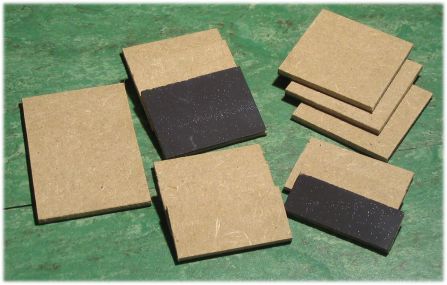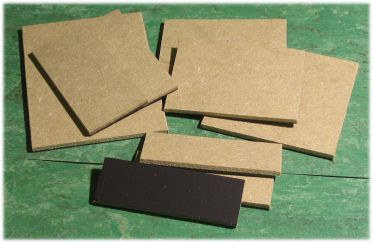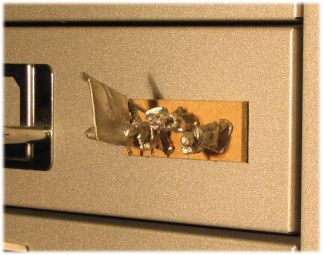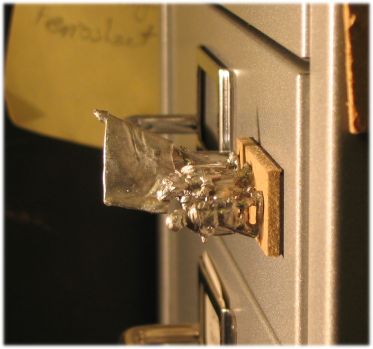|
Bases FAQ |
|||
|
All our Standard bases are cut from 2mm MDF (Medium Density Fibreboard) backed with magnetic rubber sheet. Together they give a base about 2.8mm thick and they make a rigid base for your figures that is thick enough so the base can be handled without touching the figures without being too obtrusive. |
|||
|
Base dimensions are guaranteed accurate to within 0.5mm for bases up to 100mm and within 1mm above that. If you are supplied with bases outside those tolerances then we will replace them. Most figures can be attached with PVA but some people prefer to use a stronger adhesive for larger figures. The advantage of PVA is that figures can be removed without too much trouble if repair, replacement or re-basing proves necessary. |
|||
 |
 |
||
| 40mm frontage bases | 60mm frontage bases | ||
|
Any type of paint, flocking or texturing material will adhere to MDF and it even be sanded or cut with a good knife if you need to. The strength of the magnet is more than adequate to support the figures that will fit on the base provided the magnet makes good contact with a steel sheet or similar material. Lacquered steel, as used in toolboxes, works fine and will keep your bases figures safe in transport. Do bear in mind, however, that the magnetic grip can be broken by sudden impacts so it is advisable to handle your carrying cases carefully and avoid dropping them if possible. |
|||
 Two shots of a 40x15mm base fixed vertically on my filing cabinet. The base mounts a 4 man command group of Essex 15mm figures including a heavy standard. It isn't held on with glue !!! |
 |
||
|
Bases are shipped in pairs, magnetic sides together, and it is strongly recommended that you store them this way or attached to a steel sheet. Magnets retain their 'pull' much better if stored in this way. Keeping the magnetic side clean also makes for a better grip. |
|||
|
The whole point of having a magnetic base is so that they can be stored and transported in greater safety. Ideally I recommend a steel cabinet but any of the flexible metal sheets (e.g. Flex O'Metal or Ferrosheet) will work well enough. I don't find that steel paper works that well. My personal preference is to handle my figures by their bases. If handling a base of figures by the figures the magnetic grip can be strong enough to need a fair amount of force to separate it from a storage tray. To avoid this I put a strip of thin paper (about 1/3 the width of the base) under the bases and a pull on that releases the magnet so that it can be picked up without damage. |
|||
|
Although these bases are not very absorbent they can still be warped if a heavy layer of texturing material is spread over the surface and left to dry. The shrinkage of texturing gels, fillers and pastes varies considerably but they all shrink when drying to some extent and this tends to make the base curl up at the edges. there are a number of ways of avoiding (or at least, reducing) this problem.
|
|||
|
If you are using magnetic sheet to line storage or transport boxes for figures based on metal bases then follow the hints for Flex-metal given below. Making your own magnetic bases If possible you should make the bases before adding figures to them, it
is quite a bit more difficult to add the magnetic bottom later.
Magnetising already based figures Make sure the bottom of the base is clean, flat and dust free first. The best way I have found is to press the base onto the magnetic sheet and cut around it afterwards. Trying to cut the sheet to base-sized bits and adhere them accurately is too prone to error and misalignment - trying to remove a misaligned magnetic bottom can damage a base. It may seem a bit wasteful to do it this way but I still recommend it. |
|||
|
Using Flex to line storage or transport cases is pretty easy but a few hints will help to make it trouble free.
| |||
Flex-metal sheet adhesive does not stick well to
most hard plastics. I advise testing out a small piece before committing to lining a set of plastic containers. |
|||
